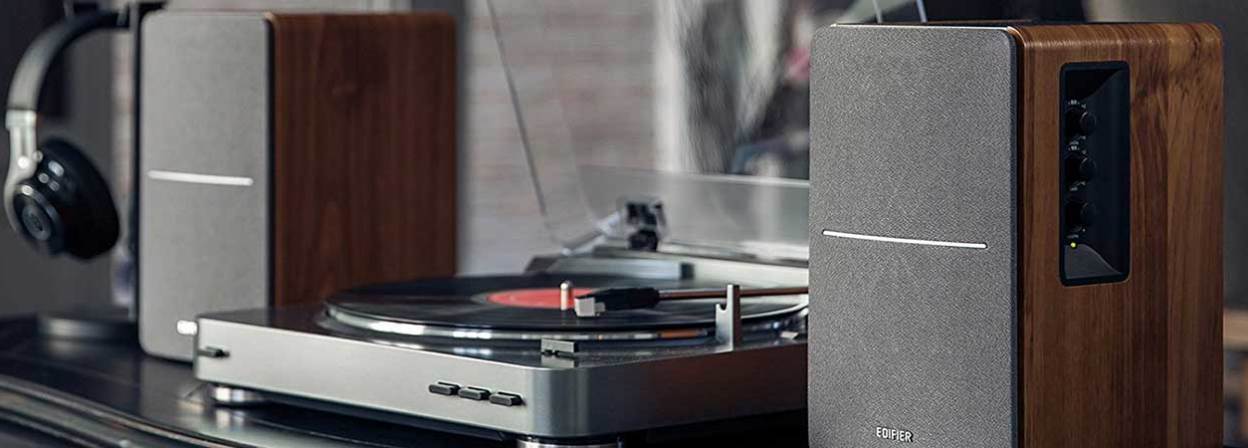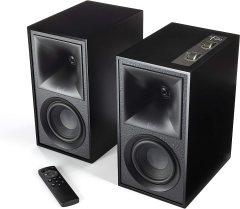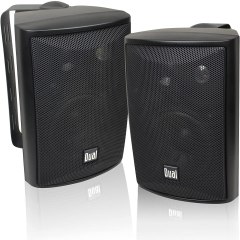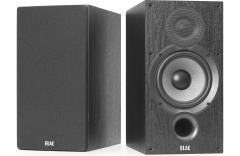Buying guide for Best bookshelf speakers
Few things make as big a difference when watching movies, or listening to music, at home as a worthwhile set of speakers. Dialogue, action, suspense, soundtracks, or those soul-touching notes of your favorite songs are all amplified and enhanced by quality speakers.
For many buyers, bookshelf speakers are an ideal option. On their own, many models are capable of impressive sound quality, working well in situations where space is at a premium. In addition, bookshelf speakers are an excellent way to augment an existing sound system, improving the overall quality and covering audio dead spots.
Key considerations
A major factor to bear in mind is whether a set of bookshelf speakers has built-in amplification. If you’re looking for a simple solution to your audio needs, you’ll want to buy a set of speakers with a built-in amplifier. If you already have a sound system set up — including a standalone amplifier — and are looking to improve it, speakers without amplification can save you some money while getting the job done.
The size of your speakers compared to the room they will be used in is another major consideration. For example, a small set of speakers may work perfectly well for playing background music in a home office, but fall woefully short in the living room when watching your favorite action movie. Similarly, speakers that would work well in that scenario may overwhelm a smaller room. Therefore, it’s important to match the speakers you want to buy with the room they will be used in.
Features
When looking for a good set of bookshelf speakers, one of the main features you want to look for is the kind of material the internal components are made from. Few things will impact the quality of the sound as much as the construction materials.
For example, the stiffer the material used to create the woofers, the longer the speakers will last and the better they will sound. Polypropylene is commonly found in mid-range speakers, while aluminum and titanium are used in higher-end models. The same is true for the material surrounding the woofer. Cheaper models use foam or cloth, which breaks down and is susceptible to moisture and humidity. Rubber is a superior material used in more expensive models that, again, lasts longer and produces better sound.
Different speakers have different specifications, which will greatly impact their performance:
Hertz
Take a look at the hertz rating of the speaker. Generally, the lower the number the better the speaker will be able to produce a deep bass sound.
Power or Watts
The higher this number, the more power the speaker will be able to handle, especially in shorter bursts. Some experts recommend using the maximum recommended wattage as the minimum wattage you should use when pairing your speakers with an amplifier. All too often, speakers are ruined by using too little power and compensating by playing the volume too loud, damaging the internal components.
Drivers
Most speakers have two drivers: a tweeter to produce high-frequency sound and a woofer to deliver bass. Higher-quality speakers will have a third, mid-range driver and offer the best quality. That being said, you’ll be far better off buying a quality set of speakers with two drivers than a cheap set of speakers with three. The quality of the materials and the technology used to make the speakers will result in better sound than simply adding a third, cheap driver.
Price
Inexpensive
Basic speakers will have components made of cheaper materials, such as cloth or foam. They will also only have two drivers, limiting their range of sound. Speakers in this price range will be under $100.
Mid-Range
Mid-range models will start to have higher quality materials in their components, such as woven Kevlar. In addition, some mid-range models — especially on the higher end of mid-range — will include a third driver. These models will range in price from $100 on up to $500.
Expensive
Premium speakers will be made of the very best materials and the newest technologies. In addition, these speakers will often have enclosures that are designed to be as aesthetically pleasing as possible. These speakers will range from $500 on up.
Tips
Contrary to their name, bookshelf speakers should not be put in an actual enclosed bookshelf. Doing so will cause the sound to resonate and echo off of the shelves. In fact, many bookshelf speakers sound best when placed a foot or two away from a wall or surface. Therefore, try to place the speakers on top of the bookshelf, on a dedicated stand or table.
Keep your bookshelf speakers at ear level. Having them too high or low will keep them from achieving tonal balance.
When placing your speakers, they should be placed at roughly the 10 and 2 o’clock position in the room, angled to cover the listening area.
Buy a set of speakers that fit with your design and decor. There are such a variety of shapes, sizes and exterior materials available that there’s no reason to settle for a set of speakers that stick out like a sore thumb in their surroundings.
FAQ
Q. Can I use bookshelf speakers outside, such as on my patio?
A. The short answer is it depends on the speaker. There are speakers designed to be water- and weather-resistant, making them an ideal option for outside activities. Even with this kind of speaker, however, it’s important to remember that they are weather resistant, not weatherproof. They should still be in a somewhat protected environment, such as a covered patio or gazebo.
Q. Can I connect multiple audio sources to the speakers?
A. Quite often the answer is yes. Many bookshelf speakers feature multiple inputs so you can connect more than one device.
Q. Can I buy bookshelf speakers with wireless support?
A. Absolutely. In fact, many manufacturers not only offer wireless support, but also tout their speakers as having lossless wireless support, guaranteeing your audio experience doesn’t suffer for the sake of convenience.






















